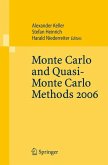Disorder is one of the predominant topics in science today. The present text is devoted to the mathematical studyofsome particular cases ofdisordered systems. It deals with waves in disordered media. To understand the significance of the influence of disorder, let us start by describing the propagation of waves in a sufficiently ordered or regular environment. That they do in fact propagate is a basic experience that is verified by our senses; we hear sound (acoustic waves) see (electromagnetic waves) and use the fact that electromagnetic waves travel long distances in many aspects ofour daily lives. The discovery that disorder can suppress the transport properties of a medium is oneof the fundamental findings of physics. In its most prominent practical application, the semiconductor, it has revolutionized the technical progress in the past century. A lot of what we see in the world today depends on that relatively young device. The basic phenomenon of wave propagation in disordered media is called a metal-insulator transition: a disordered medium can exhibit good transport prop erties for waves ofrelatively high energy (like a metal) and suppress the propaga tion of waves of low energy (like an insulator). Here we are actually talking about quantum mechanical wave functions that are used to describe electronic transport properties. To give an initial idea of why such a phenomenon could occur, we have to recall that in physical theories waves are represented by solutions to certain partial differential equations. These equations link time derivatives to spatial derivatives.
"The main purpose of this book is to present, in quite an accessible way, the essence of multiscale analysis, a technique needed in proving Anderson localization, or exponential localization, for random Schrodinger-like operators acting in $L^2(\bold R^d)$. The treatise consists of four chapters, which are well arranged so as to clarify the logical structure of this hard technique. In the first chapter, after a brief introduction to the subject of disordered systems, the author summarizes some general facts on ergodic families of self-adjoint operators, such as the almost sure constancy of the spectrum. A convenient criterion is also given for the measurability of random operators obtained through closed forms. Then the author describes precisely two basic models to be treated in the sequel, which he names (P+A) and (DIV) respectively...." -- Nariyuki Minami, Mathematical Reviews








